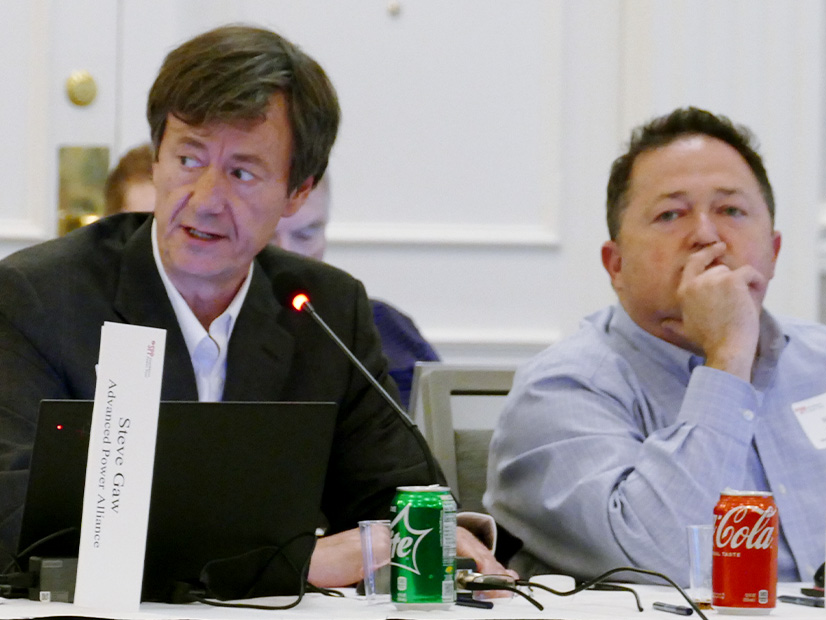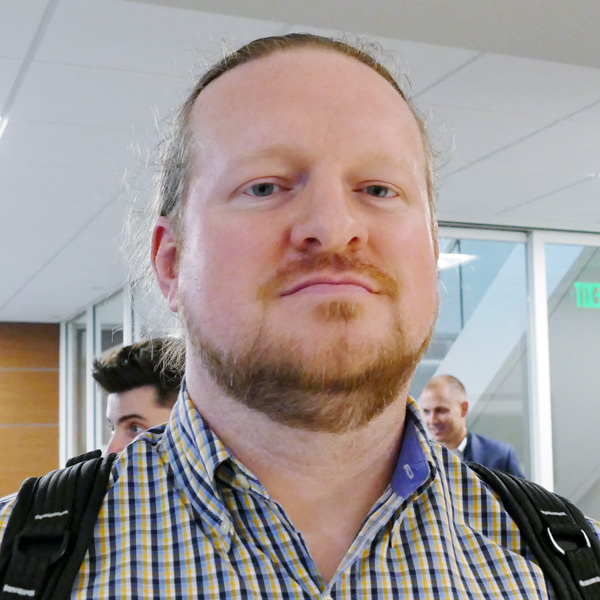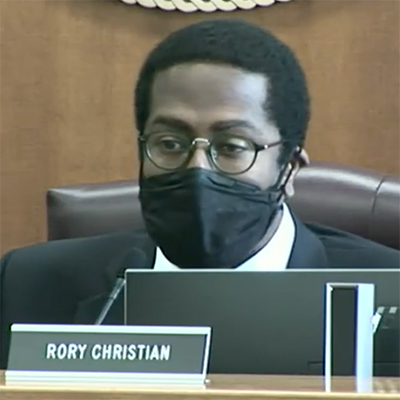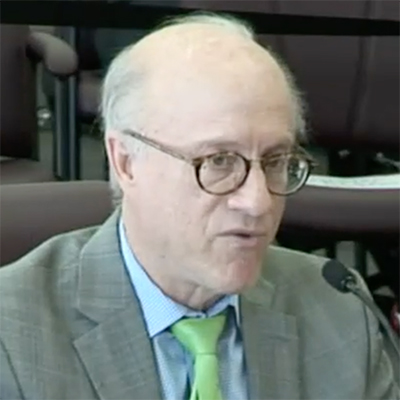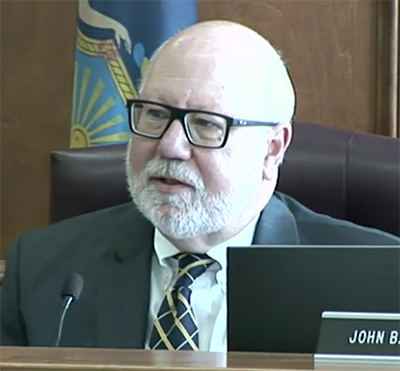Counterflow Optimization Still an Issue Without a Solution
DALLAS — SPP stakeholders last week rejected a working group’s recommendation to stick with the status quo when it comes to adding counterflow optimization to the congestion-hedging process — three months after agreeing with staff to leave the market construct untouched.
The Market Working Group brought the recommendation to the Markets and Operations Policy Committee after more than a year’s worth of meetings and educational sessions and drafting a policy paper. However, it fell just short of the committee’s two-thirds approval threshold at 65.6%.
The measure will still go before the Board of Directors on April 26 for its consideration.
“If the board basically directs us to keep working on this, that’s what we’ll have to do,” SPP COO Lanny Nickell said during the April 11 discussion. “MOPC doesn’t have an official position because we didn’t approve the status quo motion. It simply sends a signal to the board that keeping the status quo is not a popular option.”
“Hopefully, it’ll be back to MOPC in July,” MOPC Chair Denise Buffington, of Evergy, told the Strategic Planning Committee on Wednesday. “A lot of work went into that.”
The proposal to add counterflow optimization — limited to excess auction revenue — to SPP’s market mechanism that hedges load against congestion charges has been an issue with no solution since its approval by the board in 2019. The Holistic Integrated Tariff Team’s (HITT) direction, which would essentially keep system transmission flows between two points balanced, was meant to address concerns about how congestion rights instruments are awarded and the current process’s efficiency. (See SPP SPC Takes on Congestion Hedging Issues.)
Staff and the MWG have been unable to reach consensus on the recommendation. The MWG voted in 2020 to keep the current market construct. Although they acknowledged that counterflow optimization would benefit load-serving entities, staff have also recommended keeping the current construct, noting some market participants want to review the transmission service process for efficiencies.
The RTO’s Marketing Monitoring Unit has said the proposal doesn’t give participants a say in the amount of counterflow they receive and there is no way for them to avoid being affected by optimization even when they opt-out. It says auction participants will adapt to the market changes, which will affect auction revenue.
The SPC in January agreed with staff and stakeholders to put the issue on hold and allow for a “cooling-off” period. (See “Counterflow Optimization on Hold,” SPP Lays Out its Western Expansion Strategic Plan.)
“We’ve been talking about this for four or five years,” Southwestern Public Service’s (SPS) Bill Grant said. “What we’ve run into is that a lot of companies are currently happy with their total end results on hedging, mainly because of the annual uplift that takes place once a year. That’s why there’s reluctance to make a change.”
APA’s Steve Gaw (left) makes a point as Western Farmers’ Matt Caves waits his turn. | © RTO Insider LLC
The Advanced Power Alliance’s Steve Gaw said the congestion-hedging problem is not fixed and will hinder stakeholders’ efforts to export power from wind-rich regions.
“This remains a substantial obstacle for accomplishing that. Until that is fixed, we’ll continue to have this wall as far as the opportunities exist for this transaction in SPP,” he said.
“This is bad policy of doing nothing, which lead to those exports not happening,” American Electric Power’s Jim Jacoby said. “Everyone complains about all the wind congestion happening in SPP. We need some way to export this stuff.”
A study by SPP found that market participants’ hedging positions will change in coming years thanks to new topology, HITT initiatives and the changing generation mix. The study indicated a net positive value for all LSEs with counterflow optimization.
“At the risk of sounding like Yogi Berra,” Golden Spread Electric Cooperative’s Mike Wise said, referring to the baseball Hall of Famer known for his misuse of the English language, “we are where we are, although we’re not where we are going to be.
“I’m torn, because our organization doesn’t want to make any changes. We’re comfortable with our hedging position,” Wise said. “From the perspective of SPP, it’s looking at the bigger picture. We are probably going to see a different set of circumstances going forward. It will likely be that many of us who enjoy the current paradigm won’t enjoy it in the future.”
Staff Reducing Interconnection Queue’s Backlog
Staff told MOPC that they are on track to eliminate the backlog in SPP’s interconnection queue in two years, having reduced the current queue’s number of active interconnection requests from 651, totaling 119.9 GW, to 481, totaling 90.3 GW, as of March.
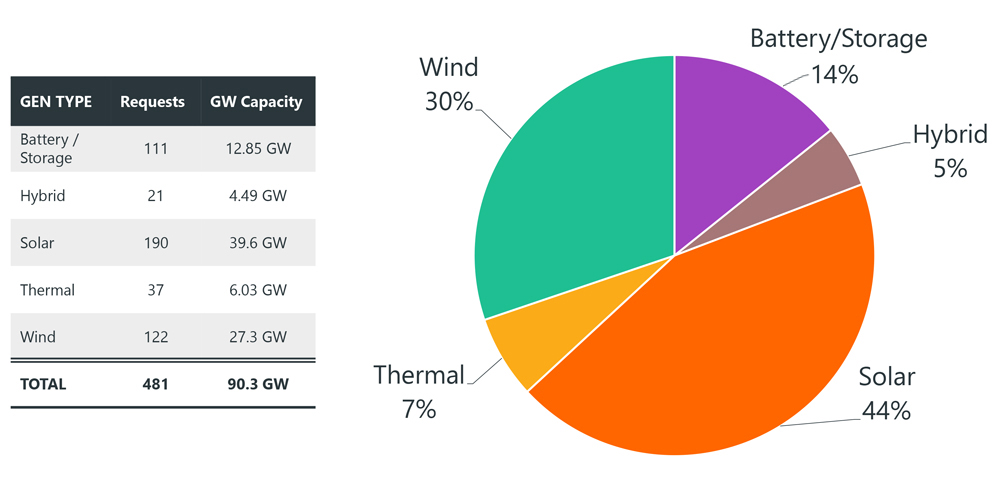
SPP’s Juliano Freitas said the new three-phase interconnection study process, approved by FERC in 2019, kickstarted the mitigation effort. (See FERC OKs New SPP Interconnection Process.)
Since then, staff have also received stakeholder approval to reduce the number of models required per study, combine 16 study groups into five and incorporate more realistic generation dispatch assumptions. They have also eliminated a special studies backlog, redesigned vendor contracts to streamline the process, and accelerated procedures to reduce wait times and clear a path for the consolidated planning process.
At the same time, SPP has been able to add 24.9 GW of generation over the last five years and execute 121 generator interconnection agreements (GIAs).
Freitas said that historically, 60 to 65% of interconnection requests are withdrawn, but the three-phase study process has helped filter out those requests that will not result in a GIA.
“Restudies add time to the process,” he said. “That’s why I’m confident we will mitigate the backlog.”
SPS’ Jarred Cooley was among several MOPC members complimenting SPP’s progress, but he also said SPS was concerned with the fuel-dispatch changes that he said should have been brought to the committee as a policy issue.
“No analysis was done to warn the TWG [Transmission Working Group] of how these changes will impact the SPP region,” Cooley said.
Arash Ghodsian, a former MISO staffer who is now senior director of transmission and policy at EDF Renewables, said, “No one anticipated the size of the queues to grow like this. This is a change that’s needed.”
Tx Planning Changes Pass
The committee endorsed working groups’ recommendations to re-baseline the 2022 Integrated Transmission Planning (ITP) assessment and to modify the 2022 20-year assessment’s scope.
The TWG and the Economic Studies Working Group (ESWG) said approving several waivers and revising the 2022 ITP would allow staff to perform a reliability-only assessment this year and full assessments for the 2023 and 2024 ITPs.
MOPC unanimously endorsed the proposal, with one abstention, after having asked the groups in January to bring a more fully developed plan to the April meeting. ESWG Chair Alan Myers, with ITC Holdings, said all ITP assessments are on track and that a 345-kV, 150-mile double-circuit project’s re-evaluation in West Texas will be completed by the June MOPC meeting. (See SPP Markets and Operations Policy Committee Briefs: Jan. 10-11, 2022.)
The two working groups also recommended the 20-year assessment’s scope be modified to include more aggressive emissions-reduction futures that include a 93 to 95% reduction target in 2042 from 2017 levels. Staff identified a software limitation that would not allow the target to be met without modifying the scope.
Oklahoma Gas & Electric’s Usha Turner noted that one model showed emissions rising because it was unable to account for energy storage, resulting in additional thermal resources being dispatched.
“Modeling storage has been tricky the last few years,” Myers said.
The ESWG and TWG’s request passed with 99% approval.
The committee also:
- endorsed the annual 2022 SPP Transmission Expansion Plan (STEP) report. Staff have issued 94 notifications to construct (NTCs) valued at $894 million since the last STEP report, a period covering January 2021 through March 2022. Twelve upgrades valued at $38 million have been withdrawn, and 38 upgrades, valued at $162 million, have been completed. SPP is currently tracking $2.77 billion of upgrades.
- approved suspension of a 115-kV project related to an industrial load in Nebraska while staff conduct a restudy to determine appropriate changes to the NTC, its possible withdrawal or whether an alternative project can be found. A $6.3 million increase to relocate a 345/115-kV substation helped push the project’s costs from $43.4 million to $53.8 million, a 24% increase beyond the baseline’s 20% plus-minus threshold. Staff said they were optimistic they can reach Nebraska Public Power District’s request to complete the restudy by July and avoid further cost increases.
MOPC Honors Retiring Bill Grant
SPP staff and stakeholders paid tribute to SPS’ Grant, who is retiring June 1 after 40 years with SPS parent company Xcel Energy. He has spent 16 of those years serving on MOPC and other stakeholder groups.
“I don’t know how you did it,” SPP’s Nickell told Grant, one of the RTO’s more vocal and colorful stakeholders who was involved in half a dozen groups last year. “I will always appreciate Bill’s candor, his straightforwardness. … He would call just to tell me how things would work. He would try to help me understand and how I could make things better at SPP.
“I always appreciated your willingness to improve our processes, once we addressed your concerns,” Nickell said to knowing smiles in the room. Members then gave Grant a standing ovation.
“One thing I’ll miss is the relationships,” he said, appearing to choke up with emotion. “Don’t take them for granted.”
Grant is retiring as vice president of rates and regulatory affairs to Jasper, Texas. He plans to do some consulting but also take advantage of two nearby lakes and enjoy spending time with his 11 grandchildren. Asked if he enjoys fishing, Grant said he has bought a triton boat. He also has a fully stocked pond on his property.
Cooley, SPS’ director of strategic planning, has replaced Grant on MOPC.
Order 2222 Compliance Work ‘Highly Complex’
Michael Desselle, SPP’s chief compliance and administrative officer, told stakeholders it could cost as much as $1 million and take as many as 18 months to implement compliance measures with FERC Order 2222. The 2020 order directed RTOs and ISOs to open their markets to distributed energy resource aggregations. (See FERC Opens RTO Markets to DER Aggregation.)
Desselle said the “highly complex effort” to change tools, process and procedures, involving 10 different sections of the RTO’s tariff, could be completed by the third quarter of 2025. That assumes FERC approves SPP’s compliance filing by the end of the year.
“All we can do is estimate what it takes for us … to get [changes] in place, for our system alone,” Desselle said.
SPP has estimated it will take almost 16,000 hours to complete the process, he said, “but only if the staff has nothing else to work on.”
Surplus Interconnection Service Change Remanded
The committee remanded back to the MWG and Operating Reliability Working Group a revision request (RR451) that would create pooled surplus interconnection service for existing generators with multiple interconnection agreements and a shared point of interconnection. The measure fell percentage points short of MOPC’s two-thirds approval.
Members pushed back over whether staff could reliably manage the process during a discussion that devolved into the intricacies of Robert’s Rules of Order. The measure passed three stakeholder group ballots with only one opposing vote and nine abstentions, primarily over cost concerns.
SPP estimates it will cost $20,000 to $60,000 to implement RR451’s changes and almost $200,000 annually to administer the GI service, which was mandated by FERC Order 845.
The tariff currently allows surplus service to be associated with only one existing generator’s interconnection service. Staff said allowing generators to pool their GIAs and offer the service could enable more cost-effective surplus generation to enter the market.
MOPC did approve RR465 by an 83.3-16.7 margin after it was pulled from the consent agenda. It allows transmission facilities constructed to facilitate generator interconnections to be treated on a consistent cost basis with other transmission facilities if the transmission owner self-funds the work.
Some grid operators have already implemented similar measures that give TOs the option to provide the initial funding for upgrades and the ability to earn a return on the facilities. A recent PJM proposal was modeled on a FERC-approved order in MISO following a 2018 ruling by the D.C. Circuit Court of Appeals. (See MISO Gauging Aftershocks of TO Self-fund Order.)
“If this goes forward, we will be involved in litigation because other cases are outstanding,” APA’s Gaw warned.
The unanimously approved consent agenda include eight other RRs, removal of a remedial action scheme on the SPS system, and approval of a re-evaluated OG&E-sponsored upgrade to add a new 345/161-kV substation and transformer.
-
-
- RR419: provides a market power framework for storage resources operating as transmission assets, requiring they follow SPP directions at all times while allowing for technical issues.
- RR455: requires a generation interconnection customer to correct all reliability problems found in the electromagnetic transient study before injecting power into the transmission system.
- RR482: updates the ITP manual to reduce redundant stakeholder review of capacity additions for inclusion in the economic models.
- RR485: modifies the ITP manual to be consistent with current IRS regulations that define a wind unit’s production tax credits (PTCs) as based on the construction start date. The change also allows for PTCs to be awarded to solar facilities, in accordance with IRS specifications.
- RR486: updates the Integrated Marketplace protocols by removing outdated network and commercial model timelines and condensing about 17 pages of Network and Commercial Model Update Timelines tables to one page.
- RR487: clarifies the Integrated Marketplace protocols over when an outage commitment status necessitates an outage scheduling tool (CROW) submission and when a CROW submission necessitates an outage commitment status.
- RR488: adds two functions necessary to settle the real-time combined interest resource adjustment amount — the real-time ramp capability nonperformance amount, and the real-time ramp capability nonperformance distribution amount.
- RR490: adds a new tariff section on transmission line ratings, detailing their development and usage, to comply with FERC Order 881.
-
